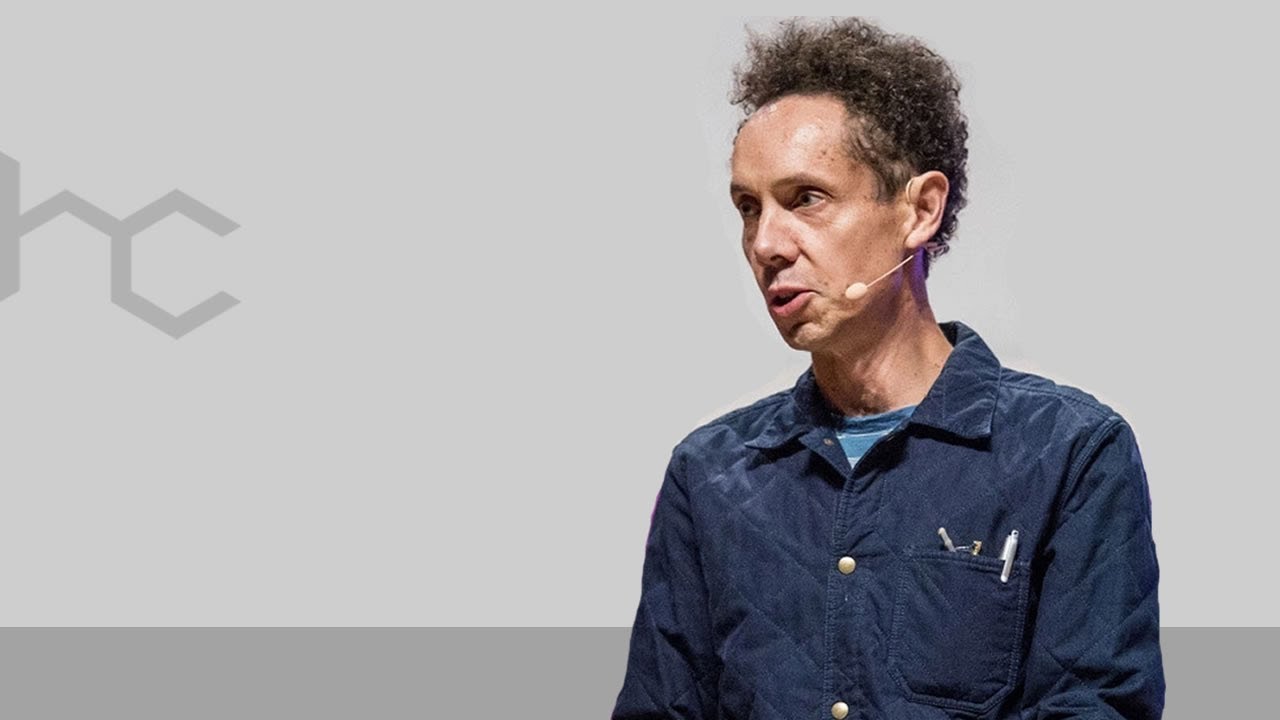



From a marketer’s point of view, do you know what the most fascinating part of social media is? It is their capacity to make content go viral and reach thousands or even millions within no time. As a marketer, I have always been curious about social media because of three key reasons:
1. No other tool/method gives you the opportunity to get that closer to your target audience and understand them. Micro-level analysis of target audience, buyer behavior and preference is possible on Social media.
2. Live social interaction with your target audience is possible. You can engage and converse with them and get live feedback. Even if you go for a full-fledged direct survey, the information you generate won’t be that accurate and it would cost you dearly.
3. Finally, they are awesome free tools that have the potential to take your marketing message to your audience rapidly and cost-effectively.
My last point refers to the viral nature of social media. Though viral marketing is not a new concept, the arrival of social media has definitely added a new dimension to it. Unlike pre-social media era, viral marketing has become much more practical and implementable and the reach and effects of a typical viral marketing campaign today are simply incomparable.
On that note, let’s move on to discuss how I got the central idea of this article. I recently happened to read a wonderful book, written by Malcolm Gladwell, called The Tipping Point. After reading a few pages, I reached the tipping point where the idea of comparing and applying the principles and concepts of ‘social epidemic’ to social media & viral marketing struck me.
The Tipping Point is a pretty old book which was first published in 2000 and the book got re-published a few times over a period of more than a decade. But, I found the book very recently. Well, better late than never 😉
Malcom Gladwell is an English Canadian journalist, best-selling author and speaker. He has been a staff writer for The New Yorker since 1996. (I’m sure some of you know him already and might have read some or all of his books).

A couple of months after reading the book, I started to researching a bit on the related subjects and also went on to surf the Internet to find if there were any articles published by people along these lines. I found some articles based on the concepts of Tipping Point and social media but none of them discussed the kind of ideas I intended to share with you here.
Disclaimer: Before we proceed further, please note the following. This article is based on the book ‘The Tipping Point’ written by best-selling author Malcom Gladwell (one of my favorite writers of recent times). Some of the key points (of the article) mentioned below are original ideas of Malcom Gladwell and the full credit goes to him. Readers will clearly get to know which those points are. To make it easier, excerpts and ideas picked from the book are clearly differentiated, highlighted, mentioned, marked or quoted. However, other parts of the article are my own thoughts and ideas and also information gathered from other sources (such sources are also appropriately mentioned wherever required).
Some times, content just goes viral naturally without the ‘much-needed’ push; it’s purely out of sheer luck. It happens rarely and it depends on various factors. But, we as marketers believe in action and less in luck. In other words, we can create a favorable environment for the content to go viral. Viral marketing is all about giving your content that ‘much-needed’ push to make it go viral. But, not every viral marketing campaign tastes success. Not every piece of content developed for such campaigns goes viral. Is there a magic formula? There have been a lot of articles published on viral marketing and articles that discuss the ways to make content go viral.
This article is a bit different; we are actually going to discuss the causes, factors and principles of ‘social epidemic’ and how they can be applied to viral marketing. We don’t guarantee that the ideas and tips shared in this article are sure-shot formulas for success (In fact, there isn’t any, when it comes to marketing). But, if these are implemented religiously, you can increase the chances of the success of your viral marketing campaign many folds.
Though the core principles and ideas are widely applicable (with some customization), this article is a bit focused on small and medium businesses. It’s more focused on answering the following question: how can SMBs carryout successful viral marketing campaigns?
Popular brands always have the edge when it comes to viral marketing. Unlike SMBs, they allocate big budgets and it becomes comparatively easier for them to carryout viral marketing campaigns. But, most of the time they end up spending thousands of dollars on such campaigns.
How can small and medium businesses run viral marketing campaigns successfully? Is there a way to increase the chance of making your content go viral with a moderate or even low budget? What are the Dos and Don’ts? Let’s discuss.
There are three characteristics or principles of any types of epidemics including ‘social epidemics’ (Social epidemic is an occurrence of an idea, behavior or product going viral)
The agent (message, content, idea etc) itself should be transmittable. It should possess the contagious character.
Various small factors contribute and cause the big thing to happen.
How did the global economic meltdown happen in 2008-09? It all started with the rise in subprime lending. Which sharply rose in 2004 to 20% (approx) from 8% (approx) in 2003 and it further rose to 23.5% in 2006, the period during which the United States housing bubble completely busted and caused the sub-prime market crisis which along with so many other factors contributed to the rising massive financial crisis over a period of so many months till it reached the tipping point where several major financial institutions collapsed (2008) and triggered the actual global economic melt down which sent shock waves across economies around the world. (Source: Wiki )
Small incremental changes cause a big effect. Small incremental changes are not usually visible unless keenly observed or studied, but the big change (which seems to be the actual change) or effect seems dramatic when it happens and the starting point of that dramatic change is called the ‘The Tipping Point’.
So, this is how an epidemic tips and produces dramatic viral effects. Now, let’s see the three key factors or the agents of change that play a crucial role in a social epidemic (Note: In the book, the author perfectly relates these agents of change to other kinds of epidemics as well, here we focus only on social epidemics).
Says only a few exceptional people actually drive social epidemics and make them tip.
Social epidemics are driven by the efforts of a handful of exceptional people. Its things like how sociable they are, or how energetic or knowledgeable or influential among their peers
– Excerpt from the book
These exceptional people can be classified into three – The connectors, The Mavens and The Salesmen.
A. “Connectors are people specialists. They connect people from all walks of life. They know a lot of people. They can easily make friends”.
B. “Mavens are information specialists. They are data banks”. They seek and find information. They are usually the ones who get to know the ‘message’ initially. They take the message to the connectors and salesmen. “Connectors are social glue, they spread it”.
C. “Salesmen are the persuaders”. They have the ability to convince people. Salesmen have the capability to ‘sell’ the idea.
The message, idea or content should be highly persuasive and sticky enough to attain the contagious character. “You can’t get it out of your head. It sticks in your memory”.
– says the environment around us influences our behavior and thoughts and thus drives us to act similarly under certain conditions irrespective of the differences in our characters, values, principles, backgrounds, usual behavior and so on.. “Human beings are a lot more sensitive to their environment than they may seem”.
There is more than one way to tip an epidemic, in other words. Epidemics are a function of the people who transmit infectious agents, the infectious agent itself, and the environment in which the infectious agent is operating. When an epidemic tips, when it is jolted out of equilibrium, it tips because something has happened, some change has occurred in one (or two or three) of those areas.
– Excerpt from the book.
These are the core ideas of the book, The Tipping Point. The above mentioned quotes & italicized texts are excerpts from the book.
Now, let’s relate these to viral marketing and social media. How these principles, ideas and rules can be applied/ used by an SMB to run a viral marketing campaign on social media? Read on…..
1. Do the Ground Work
2. Chalk out the Master Plan
3. Create Mesmerizing Content
4. Spot the three musketeers
5. Create the Viral Environment
– Big companies have massive networks and big budgets that give them the edge when it comes to viral marketing. But, SMBs need to plan early, that too, when you have limited budget. If you are thinking about viral marketing, first analyze your social presence. You need to have a decent social presence to give a kick-start to your campaign.
Even contents of big brands just don’t go viral out of the blue. Apart from all the efforts, they start from a stage where they already have strong social presence, which gives a great start to the campaigns.
For ex: Gangnam Style didn’t go viral organically. It was a well-planned and executed campaign. The campaign was carried out by YG Entertainment. The company already had huge social presence which they leveraged during the campaign. The company’s YouTube channels had around 2.5 million subscribers (organically grown, engaged audience – the company had invested consistently to build a strong social presence). Source: 10Yetis

Credit: PSY Gangnam Style Video
For SMBs it becomes even more important. If you don’t have a strong social presence, go ahead and start building it before you attempt a viral marketing campaign. Invest consistently and build an audience on relevant social platforms organically, engage them meaningfully. Build authority and create brand awareness. Connect with the influencers and thought leaders. Create communities.
One basic question you need to ask yourself before going for a viral marketing campaign – Do we have a decent social media presence? Establishing a strong social presence is highly important as it serves as a great launch pad for a viral marketing campaign.
Though a viral marketing campaign involves a lot of spontaneous decisions and corrective measures, you need to have a blue print – a master plan to direct it in the right direction. Your team will have proper guidelines to follow and they can stay focused and push the campaign towards achieving the goal.
So, chalk out a comprehensive plan that should ideally cover the following:
A. The goal of the campaign – is it a publicity stunt to create a buzz about a product or service launch? Is it part of the long-term strategy to reposition your brand in the market place? Is it an aggressive campaign to take your competition head on? Set the goal and stick to it.
B. Work out the content strategy – Remember, content is the major part of the viral marketing campaign. If you get the content part right, half of the job is done.
C. 4 Ps of viral marketing – decide on the Platforms to be used, People to be approached or involved, Process to be followed and have a well-devised Promotional strategy.
D. Contingency sub-plan and Policies – Your team members should know the dos and don’ts as far as the campaign is concerned. They should know how to react during a crisis or to negative criticisms. Say, for example, if there is a backlash from a certain section of the community. There should be proper guidelines in place to address such issues.
You should have a 360 degree view while drafting the master plan so as to minimize the chance of any possible backlash or negative criticisms. However, risk always exists, so it’s advisable to have a contingency plan in place.
The content is the core success factor when it comes to viral marketing, If you can get it right, half the battle is won. Go crazy, brainstorm and come up with a sticky content idea. Be clear about what you want to convey and expected outcomes. Create a mesmerizing content that will leave your audience spell bound. Your content should possess the contagious character and should have the capability to infect people with your marketing message so that they get charged up and spread it further through their networks.
Give attention to detail. Remember the rule “little causes/changes can have big effects”.
There are specific ways of making a message contagious and memorable. There are relatively simple changes in the presentation and structuring of information that can make a big difference in how much of an impact it makes
– Excerpt from the book.
The hard part of communication is often figuring out how to make sure a message doesn’t go in one ear and out the other. Stickiness means that a message makes an impact. You can’t get it out of your head. It sticks in your memory
– Excerpt from the book.
Be daring! Be revolutionary! But, make sure that your content wouldn’t create any controversy.
In the social media environment, the mavens, the connectors and the sales men could possibly be the same or similar bunch of people, in other words, the scope of differentiation is very less. In real life situation too, a maven can also be a connector, a connector can be also be salesman or a maven can both be a connector and salesman. But, you can still identify and distinguish the pure connectors, the pure mavens and the pure salesmen, in other words, you can find a lot of people who can be exclusively tagged as connectors, salesmen or mavens.

Photo Courtesy: nyca.org
But, in the social media environment, everyone enjoys certain degree of influence and has social connections. Social media users too often get all the news and new information through their connections. As Erik Qualman puts it “we no longer search for the news, the news finds us today”.
The law of few is very much applicable here too; you can find those exceptional people who can take your message to the larger section of your audience, persuade them to accept it and influence them to spread it further. They act as catalysts and triggering points that can make your content go viral. Only difference is that it’s hard to label them as pure connectors, pure mavens or pure salesmen. You’ll find a lot of overlapping. These exceptional people on social media can play the dual role of maven and connector or connector and sales man or some might be capable of playing the threesome role – maven, connector and salesman.
Once you have the magical content, the ideal place to the start the campaign is your social sphere – Facebook accounts and pages, Twitter accounts, YouTube accounts, Google+ accounts and pages, blogs etc ( Assuming that you already have a good social presence and are closely connected with your target audience and engage them ).
Then you should go for an aggressive outreach in order to achieve two primary objectives: 1. Take your content to the few exceptional people who can help you spread the content in large scale. 2. Create a viral environment that will further intensify the viral process.
13.4% of U.S. adults online create 80% of the content that influences people. And 6.2% of these web users are responsible for 80% of the influence in social media.
– Forrester Research ( Confirms ‘the law of the few’ )
Now, who are these exceptional people on social media? Let’s list them out.
1. Early Adopters – They are the information seekers, the trend setters and early adopters/consumers of content, product, idea etc and they play the role of informing the early majority as they spread the word through their networks (mostly consisting of like-minded people). Nope, they may not necessarily be specialists but are enthusiasts who have good knowledge about a field/subject and they closely follow the developments. For ex: a doctor who may also be a fashion enthusiast. A person who purchases a lot of fashion products and has acquired related knowledge. He follows fashion related news closely and he is also an active participant in online discussions related to fashion. These people are most likely to stay connected with other fashion enthusiasts and influencers. They are mavens with connector tendencies.
2. Loyal Customers – These are the people who really admire the brand/company so much and have been long-time customers. They can go the extra mile to spread the word about your content.
3. Thought Leaders – They are the people who know the industry inside out. These people influence people’s minds and change perceptions. They are clearly the top influencers and experts.
4. Bloggers – They have better knowledge about an industry/subject than the early adopters but may not necessarily be the experts as the thought leaders are. But thought leaders can also be bloggers but all bloggers may not be thought-leaders.
5. Celebrities – Industry-specific celebrities. They can be thought leaders, bloggers, debaters, event anchors, commentators etc.
6. Reviewers – They are the critics. They are experts who often stick to reviewing products and services and give ratings. They also share their opinions on various issues related to the industry. They are often trusted by the net-savvy customers. In some industries, their ratings strongly influence the way product, service or art work is perceived.
7. Community Managers – They are the moderators and hosts of online discussions and debates. They manage online groups, forums, blog comment sections and any other forms of online communities.
8. Social Media Butterflies – They are consumers (Here, referring only to your prospective customers) who are well-connected on social media because they are influential in the offline world. They may not be famous but they have a wide circle of friends, relatives, acquaintance and professional contacts. They are natural connectors.
How to reach out to them?
Reaching out to these influencers doesn’t mean that you’ll totally rely on these people for your content to go viral. You need to leverage your own network and resources to the full potential.
Start sharing the content on all your profiles, accounts and pages. Deploy your people – employees, top executives and associates to spread it through their network.
• Reach out to your loyal customers and well-wishers – active participants on your social media pages, email subscribers, people who comment on your blogs etc. Request them to spread it. You can even run contests to motivate them.
• Spot the early adopters – you can find them on social networks, forums, blogs and other relevant online groups. They are the ones who actively participate in discussions, engage and debate. They are the ones who often break the news. Make a list, check their social profiles, and find out the depth of their connections. Pick the best ones and start contacting them. Give them freebies, invite them to participate in the contests or find creative ways to encourage them to push your content through their networks.
• Hire or attract the influencers – influencers include the thought leaders, reviewers, celebrities and bloggers. Find these influencers in your industry and social platforms where they are active. Work out a strategy to approach them and make them work for you. You can contact them and build a rapport. Make them feel good, convince them how they are important as far as this campaign is concerned. Few options to convince them– offer to hire them as social ambassadors, pay them to write or speak about you, send freebies, invite them to the launch event, sponsor their blogs, purchase a banner ad, sponsor their upcoming book and pay for a tweet or share etc. Brainstorm and come up with creative ways to motivate them to speak or write about your content or share it.
• How can you attract social media butterflies? One possible suggestion is that to run contest with this criteria –participants should have ‘x’ number of twitter followers, ‘x’ number of LinkedIn connections, ‘x’ number of facebook friends and so on. This will result in attracting the people who have high number of connections and enjoy considerable degree of influence. Choose the right platforms to run contests so that you attract the most relevant people. One disadvantage related to social media butterflies could be the fact that they connect with people from different walks of life, so some considerable number of people in their network may not necessarily be relevant to your business, in other words, they may not be your target audience. This could happen when you target a specific audience but you can leverage the popularity to the fullest when you target a generic audience. For ex: if you run a restaurant, any one in and around your area (even possibly a tourist, a visitor or a passer-by) with purchasing power could be your potential customer.
You can also use tools to like Kred, Peer index or Klout to measure an individual’s level of social influence. But don’t rely only on tools. Check their social profiles and blogs manually. Do they have large numbers of connections? Do they engage people? Do people respond to their posts/comments? Tracking the online activities and determining the level of social engagement of a person can help you understand the level of social reputation enjoyed by him/her.
Once you push the content through several networks and set the triggering points (triggering points are sources from where content goes viral – usually the points from where these exceptional people share your content), your content will start to explode virally. But you cannot stop there, you need to continue to create the viral environment and keep the momentum going. Why is it so?
In a research work titled “Creating contagiousness: How Social Networks and Item Characteristics Combine to Drive Persistent Social Epidemics “, Andrew T. Stephen (Assistant Professor of Marketing at INSEAD) and Jonah Berger (Assistant Professor of Marketing at The Wharton School, University of Pennsylvania) discuss about the importance of sustained efforts to keep the enthusiasm of consumers alive in order to ensure persistent social epidemics.
They explain that people may be enthusiastic as soon as they hear about an item (content), after they hear about it and slowly the interest or enthusiasm decays over time. So, keeping the enthusiasm alive is important.
Enthusiasm is contagious and can be transferred between people through word of mouth. When enthusiasm is allowed to naturally decline from period to period, the contagion process dies quickly, resulting in no one with any enthusiasm after just four periods
Consequently, Persistent social epidemics require that consumer enthusiasm be continually reinforced
Further they go on to explain..
“Given that interest decays over time, consumers must receive enough doses of enthusiasm (e.g., have enough conversations with other enthusiastic people) of sufficient size, and within a finite period of time for their enthusiasm to remain persistently high. We explore both dose frequency (i.e., how often people are told about a given item) and dose strength/size (i.e., how much enthusiasm is transmitted in a conversation) as separable mechanisms for enthusiasm reinforcement”

Photo Courtesy: themetapicture.com
In other words, you need to create a viral environment where everyone hears about conversations related to your content over and over and every time they should hear it effectively. This will result in new people getting to know about your content who will further share it through their networks and people who have consumed and shared your content already will share it multiple times over a period of time thus continuously create viral effects.
How to create the viral environment?
1. Frequent and consistent Communication – you need to create a buzz about your content by ensuring frequent sharing and conversations on various channels. The core message should be clear and precise and it should be conveyed uniformly by your team across platforms and make sure that those influencers too communicate the same consistently. When the laggards (late adopters) who listen to the conversations related to your content over and over through multiple credible sources, they too join the party. Thus viral effects increase many-fold.
2. Effective communication – Though the core message should be communicated consistently, the way you communicate it can differ. Try creative ways to communicate effectively. Persuasive communication will not only motivate people to share your content but also will drive them to motivate others to share it further.
To summarize, it’s important to keep the enthusiasm alive in order to keep the content go viral continuously and it depends on dose frequency (persistent communication) and dose strength ( how effectively it’s communicated every time ).
A Few ways to create the buzz about your content:
A. Go for a press release. (Paid recommended).
B. Leverage the local press (if your content is news-worthy, for ex: you are launching an app which is first of its kind. You can reach out to the local tech journalists to ask them to write about the same. Also target online tech magazines.
C. Leverage your people’s network – ensure that your people play a crucial role in promoting your content persistently and effectively.
D. Advertisements – Run local ads, banner ads, social media ads, display network ads. Find the right mix of ad platforms that will suitable for your campaign.
E. Offline marketing – You can also effectively back the campaign with offline marketing efforts. Hoardings, brochures, pamphlets, local magazine/paper ads, trade shows, promotional camps, local events etc can really help creating awareness.
F. Paid influencers – Request the influencers whom you have paid (to write a blog, post a tweet, share it through their network etc – even though they were paid for a one-time activity) to join the conversations whenever suitable. Most of them will be happy to engage provided your content is very much related to their area of interest.
G. Contests – we have already discussed about contests. Running different types of contests can really help you create large-scale publicity and yes they are comparatively cost-effective.
You may not have to necessarily implement all our recommendations. You’ll have to consider various factors like budget, resource capabilities, constraints, business environment, market, target audience, risks involved, expected outcomes your strengths, weaknesses, your social influence, opportunities, threats etc and work out a customized plan accordingly but dare to be as creative as possible. Viral marketing itself is a creative adventure!
 Online Rebranding Exercise: SEOMoz Case Study
Online Rebranding Exercise: SEOMoz Case Study
 7 Workable Digital Marketing Ideas to Grow your Manufacturing SMB
7 Workable Digital Marketing Ideas to Grow your Manufacturing SMB
 Unconventional tips to market a small business/startup better
Unconventional tips to market a small business/startup better